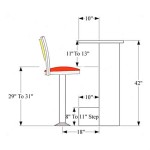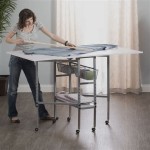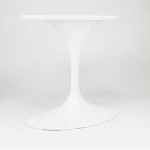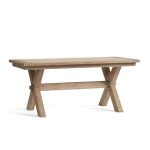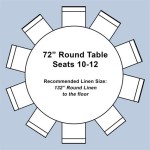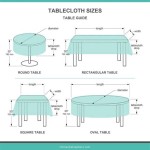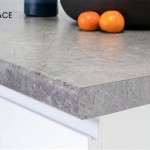Dining Table Plastic Cover: Protection, Aesthetics, and Practical Considerations
Dining tables are often central points in a home, serving as gathering places for meals, conversations, and even work activities. Protecting these surfaces from spills, scratches, and other forms of damage is crucial to preserving their aesthetic appeal and longevity. Dining table plastic covers offer a practical solution for safeguarding these valuable pieces of furniture. This article will explore the different types of dining table plastic covers, their benefits, factors to consider when choosing one, and proper care and maintenance techniques.
Types of Dining Table Plastic Covers
Dining table plastic covers are available in a range of materials, thicknesses, and styles, each offering varying degrees of protection and visual appeal. Understanding the different types is essential for selecting the most suitable option for specific needs and preferences.
Clear Vinyl Covers: Clear vinyl covers are a popular choice due to their transparency, which allows the natural beauty of the dining table to remain visible. These covers are typically made from polyvinyl chloride (PVC) and can range in thickness from thin, flexible sheets to thicker, more rigid options. Thicker vinyl covers offer greater protection against scratches, spills, and heat, while thinner options are more affordable and easier to handle. Clear vinyl covers are often used in households with children or pets, where spills and messes are more frequent.
Frosted Vinyl Covers: Frosted vinyl covers offer a slightly diffused appearance, providing a subtle layer of protection while still allowing some of the table's design to show through. The frosted finish can help to conceal minor imperfections on the table's surface and reduce glare. These covers are also made from PVC and are available in various thicknesses. They offer a balance between protection and aesthetics, making them a suitable option for both casual and formal dining settings.
Embossed Vinyl Covers: Embossed vinyl covers feature a textured surface that adds visual interest and can help to prevent items from sliding. The embossed patterns can range from simple geometric designs to more intricate floral or abstract motifs. This type of cover provides a degree of protection against spills and scratches while also enhancing the table's overall appearance. Embossed vinyl covers are often chosen for their decorative qualities and their ability to complement different interior design styles.
Fitted Table Covers: Fitted table covers are designed to snugly fit the dimensions of a specific table shape and size. They often feature elasticized edges or ties to secure them in place. Fitted covers provide a more tailored look than standard flat covers and offer comprehensive protection to the entire tabletop surface, including the edges. These covers are commonly used for special occasions or holidays when a more polished and sophisticated look is desired.
Quilted Table Covers: Quilted table covers consist of multiple layers of fabric with padding in between, providing a cushioned surface that protects the dining table from heat and scratches. The quilted design adds texture and visual appeal, making these covers a decorative as well as functional choice. Quilted covers are often made from cotton or polyester blends and are available in a variety of colors and patterns. They are particularly well-suited for protecting delicate tabletops from hot dishes or serving platters.
Custom-Made Covers: For unusually shaped or sized dining tables, custom-made plastic covers offer the best fit and protection. These covers are typically made to order by specialized manufacturers or upholstery shops. Customers can specify the dimensions, material, thickness, and edge finishing options to create a cover that perfectly matches their table and meets their specific needs. Custom-made covers are often more expensive than standard options but provide superior protection and a more professional appearance.
Benefits of Using Dining Table Plastic Covers
The use of dining table plastic covers offers a multitude of benefits, ranging from protection against damage to ease of cleaning and maintenance. Understanding these advantages can help homeowners make informed decisions about protecting their dining tables.
Protection from Spills and Stains: One of the primary benefits of dining table plastic covers is their ability to protect the table from spills and stains. Liquids, food particles, and other substances can easily damage the surface of a dining table, especially if it is made of wood or other porous materials. Plastic covers create a barrier that prevents these substances from penetrating the table's surface, making cleanup quick and easy. This is particularly important in households with young children or frequent entertaining.
Prevention of Scratches and Scuffs: Dining tables are susceptible to scratches and scuffs from everyday use, such as dishes being placed on the table, utensils being dragged across the surface, or objects being accidentally dropped. Plastic covers provide a protective layer that shields the table from these types of damage. Thicker vinyl covers offer greater protection against scratches, while even thinner covers can help to minimize the appearance of minor scuffs.
Protection from Heat Damage: Hot dishes, serving platters, and other heated items can damage the finish or surface of a dining table. Plastic covers, especially thicker vinyl or quilted options, can provide a heat-resistant barrier that protects the table from heat damage. This is particularly important for tables made of wood, which can be easily damaged by heat.
Ease of Cleaning and Maintenance: Dining table plastic covers are typically very easy to clean and maintain. Spills and messes can be quickly wiped away with a damp cloth or sponge. More stubborn stains can usually be removed with a mild detergent or cleaning solution. Unlike traditional tablecloths, plastic covers do not require laundering, saving time and effort. This makes them a practical choice for busy households.
Cost-Effectiveness: Investing in a dining table plastic cover can be a cost-effective way to protect a valuable piece of furniture. Replacing or refinishing a damaged dining table can be expensive. By using a plastic cover, homeowners can extend the life of their table and avoid costly repairs or replacements. The relatively low cost of plastic covers makes them an affordable solution for protecting a significant investment.
Enhanced Aesthetics: While protection is the primary function of dining table plastic covers, they can also enhance the aesthetics of a dining room. Embossed or patterned covers can add visual interest and complement the décor of the room. Clear vinyl covers allow the natural beauty of the table to remain visible, while still providing protection. Fitted covers can create a more polished and sophisticated look, especially for special occasions.
Factors to Consider When Choosing a Dining Table Plastic Cover
Selecting the right dining table plastic cover requires careful consideration of several factors, including the size and shape of the table, the material and thickness of the cover, the desired level of protection, and the overall aesthetic of the dining room.
Table Size and Shape: The first step in choosing a dining table plastic cover is to accurately measure the dimensions of the table. Measure the length, width, and height of the table, as well as the diameter if it is a round table. Consider the shape of the table, whether it is rectangular, square, oval, or round. Choose a cover that is appropriately sized and shaped to fit the table properly. For rectangular or square tables, a cover that is slightly larger than the table can provide extra protection. For round or oval tables, a fitted cover may be the best option for a snug and secure fit.
Material and Thickness: The material and thickness of the plastic cover will determine its level of protection and durability. PVC vinyl is the most common material used for dining table plastic covers, and it is available in a range of thicknesses. Thicker vinyl covers offer greater protection against scratches, spills, and heat, while thinner options are more affordable and flexible. Consider the intended use of the table and the level of protection required. For households with children or pets, a thicker vinyl cover is recommended. For occasional use or purely aesthetic purposes, a thinner cover may be sufficient.
Desired Level of Protection: The amount of protection needed will depend on the type of table, its use, and the environment in which it is located. If the table is made of a delicate material, such as wood or glass, and is frequently used for meals or other activities, a high level of protection will be required. A thicker vinyl cover or a quilted cover may be the best option in this case. If the table is made of a more durable material and is used less frequently, a thinner vinyl cover may be sufficient. Consider the specific risks to which the table is exposed, such as spills, scratches, heat, and sunlight, and choose a cover that provides adequate protection against these risks.
Aesthetic Considerations: The appearance of the dining table plastic cover should complement the overall aesthetic of the dining room. Consider the color, pattern, and texture of the cover. Clear vinyl covers allow the natural beauty of the table to remain visible, while embossed or patterned covers can add visual interest. Choose a cover that coordinates with the other décor in the room, such as the curtains, rugs, and wall paint. Fitted covers create a more tailored and sophisticated look, while standard flat covers are more casual. Consider the overall style of the dining room and choose a cover that enhances its aesthetic appeal.
Ease of Cleaning and Maintenance: Choose a dining table plastic cover that is easy to clean and maintain. PVC vinyl covers are typically very easy to wipe clean with a damp cloth or sponge. Look for covers that are stain-resistant and resistant to mildew and mold. Avoid covers that require special cleaning solutions or laundering. Consider the amount of time and effort you are willing to invest in cleaning and maintaining the cover, and choose an option that is convenient and practical.
Price and Budget: Dining table plastic covers are available at a range of prices, depending on the material, thickness, size, and features. Set a budget before you start shopping and choose a cover that fits within your price range. Consider the long-term cost of protecting the table, and weigh the cost of the cover against the potential cost of repairing or replacing a damaged table. Remember that higher-quality covers typically offer greater protection and durability, but they may also be more expensive. Compare prices from different retailers and online sources to find the best deal.

Clear Soft Glass Pvc Dinning Table Cover Protector Rectangle Desk Mat Desktop

Transpa Clear Plastic Table Protector Cover Thickness 1 5 Mm Water Heat Resistant Premium Desk

Polyster Square Tablecloth Table Protector Office Desk Temu

Vnanda Tablecloth Disposable Plastic Rectangle Xmas Picnic Table Cover Pattern Printed Dining Cloth Com

Yirtree Clear Table Protector Plastic Transpa Pvc Office Desk Protection Topper Cover Mat Cloths Glass Dining Room Wooden Furniture Surface Prortector Wipeable Easy Clean Com

Pvc Tablecloth Protector Table Cover Dining Cloth Plastic 2800x1170mm 2 0mm Clear Home Lifestyle Kitchenware

Balle Pvc Table Cover Transpa Dining Protector Clear Plastic Tablecloth Mat Pad Soft Glass For Desk T200707 From Luo09 14 4 Dhgate Com

Uyoyous 79x40 Inch Clear Table Cover Protector 2mm Thick Pads Plastic Tablecloth For Dining Room Com

Ostepdecor Custom 2mm Thick Crystal Clear Table Top Protector Plastic Tablecloth Kitchen Dining Room Wood Furniture Protective Cover Pad Round 45 Inches Dia Covers

Printed Round Tablecloth Vinyl Flannel Backed Table Cover Temu

